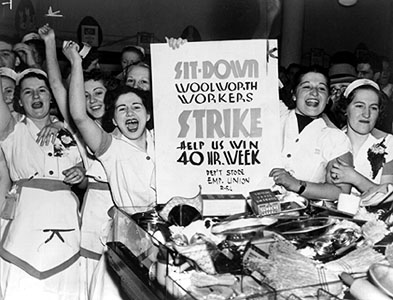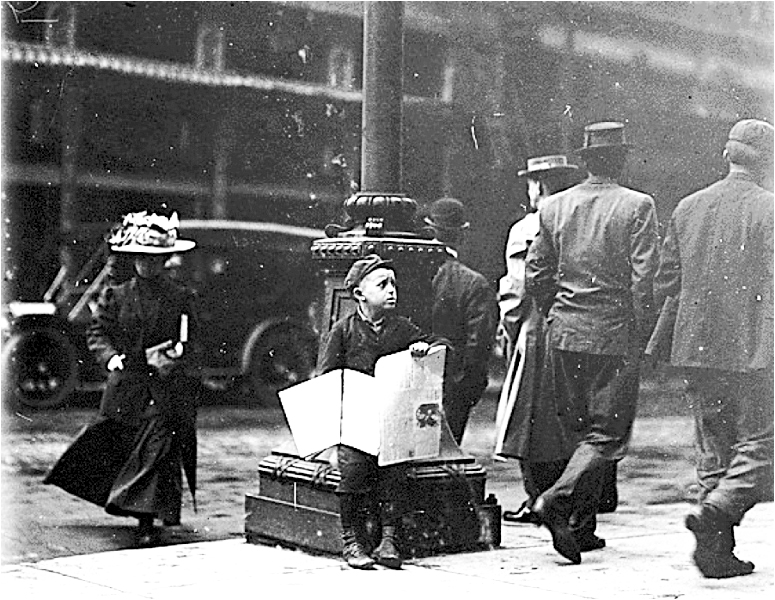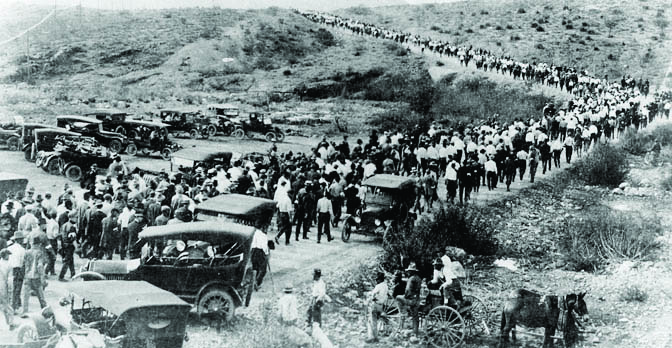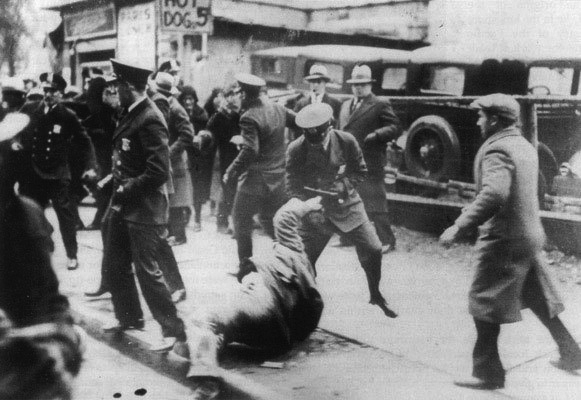UFCW Traces roots to determined band of temperamental women
On February 27, 1937, Floyd Loew. An organizer from the Waiters and Waitresses Union, stood among the bustling Saturday afternoon crowd in a Woolworth’s Five-and-Dime store in Detroit. At 11 a.m. Loew yelled out, “Strike, girls! Strike!” Every worker immediately stopped in her tracks, leaving customers and management bewildered. Loew had no idea those three words would have a significant and lasting impact on the American Labor Movement.
In a period known for labor militancy, the Woolworth’s strike stands out because the workers consisted almost entirely of young women. About 83 percent of the workforce was women under 26. Also significant is the face that these women were going up against the largest retail giant in the country – the Wal-Mart of the early twentieth century.
As with Wal-Mart, Woolworth relied on cheap prices, low wages and high turnover. Instead of walking off their jobs, the women chose to occupy their workplace until their demands were met, a strategy known as a sit-down strike. The conditions and political climate were right for this strike. In 1935, the National Labor Relations Act was brought into law, giving workers the legal rights and protections needed in the workplace. A debate over the direction of the labor movement gave birth to the Congress if Industrial Organizations (CIO), a more militant labor organization than its predecessor, the American Federation of Labor(AFL).
Less than two weeks prior to their strike, Woolworth’s workers witnessed powerful General Motors concede to the demands of the emerging United Auto Workers after a six week sit-down strike in Flint, Michigan. A wave of similar strikes sprung up throughout the country with similar results: victory for labor.
After the strike was called, a delegation from the 108 Woolworth’s workers made its demands to the employer: Union recognition, 10-cent raise, eight-hour shifts, time and one half over forty-eight hours a week, seniority rights, no repercussions for striking workers; and a few other demands to help with the day’s work.
After their demands were rejected, the women proceeded to make themselves comfortable in the department store. Mattresses were delivered by other locals supporting the strike. Food and personal belongings were brought in from family members, and they took over the kitchen to prepare meals for the long stay, courtesy of the Woolworth’s department store.
The media rushed to report on this unusual event, but viewed it as comical, not serious. But the young ladies exploited the media as much as the media exploited them. They knew if they gave the media what they wanted, they would continue to be covered in the news.
Two days later, a second Woolworth’s store in the Detroit area found itself dealing with a sit-down strike. Organizers threatened that if the strike was not settled by the end of the week, there would be national sit-down strikes called in all of Woolworth’s stores.
At 5:30 p.m. on March 5th, the seventh day of the strike, a deal was reached. In a clear victory, the workers of Woolworth’s won their list of demands, even forcing the company to agree to pay fifty percent of the women’s salaries for the time they occupied the store.
The strike and victory inspired other retail clerks to take a stand. Causing a flurry of sit-down strikes in retail stores throughout the country. The Retail Clerks Union, which played a peripheral role in the Woolworth’s strike, seized the momentum and engaged in a strong and successful campaign against Woolworth’s and other similar chains.
By the end of the decade, the National Labor Relation Board held that those who engage in sit-down strikes could be fired. And while unions are no longer able to use one of the most effective tactics, the Woolworth’s strike inspired thousands of workers nationwide that underdogs can still prevail.




